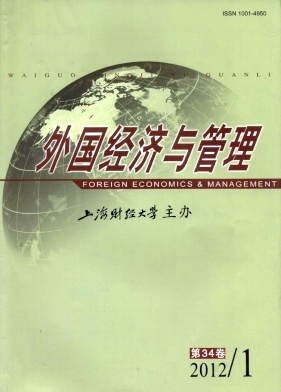国外集体谈判研究现状述评及展望
外国经济与管理 2012 年 第 34 卷第 01 期, 页码:18 - 26
摘要
参考文献
摘要
集体谈判是西方国家在劳资关系管理过程中解决劳资冲突的首要手段,也是人力资源管理的重要内容之一。本文结合近年来的西方集体谈判研究文献,归纳出集体谈判分权化和工会会员减少的趋势、平衡工作的灵活性和安全性,以及集体谈判的国际比较研究三个集体谈判研究主要内容,并针对这三点内容进行了述评。在此基础上,本文提出了跨文化、跨国界的集体谈判制度,西方劳资关系管理实践的中国化应用,以及集体谈判保障性法律体系建设三个未来研究方向。
[1]Auer P.In search of optimal labor market institutions[A].Jrgensen H and Madsen P K(Eds.).Flexicurity and beyond[C].Copenhagen:DJF Publishing,2007.
[2]Baccaro L.Centralized collective bargaining and the problemof“compliance”:Lessons from the Italian experience[J].In-dustrial and Labor Relations Review,2000,53(4):579-601.
[3]Blanchflower D G and Freeman R B.Unionism in the UnitedStates and other advanced OECD countries[J].Industrial Re-lations,1992,31(1):56-79.
[4]Budd J W and Na In-Gang.The union membership wage pre-mium for employees covered by collective bargaining agree-ments[J].Journal of Labor Economics,2000,18(4):783-807.
[5]Cardoso A and Gindin J.Industrial relations and collectivebargaining:Argentina,Brazil and Mexico compared[R].DIA-LOGUE Working Paper,2009.
[6]Fashoyin T.Tripartite institutions and employment relationsin the Mauritian labor market[R].DIALOGUE Working Pa-per,2010.
[7]Godfrey S,et al.Collective bargaining in South Africa[M].Cape Town:Juta,2010.
[8]Gollbach J and Schulten T.Cross-border collective bargainingnetworks in Europe[J].European Journal of Industrial Rela-tions,2000,6(2):161-179.
[9]Hammerstrom O,et al.Employment relations in Sweden[A].Bamber G J and Lansbury R D(Eds.).International and com-parative employment relations(4th Ed.)[C].London:Sage,2004.
[10]Hayter S,et al.Review essay:Collective bargaining for the21st century[J].Journal of Industrial Relations,2011,53(2):225-247.
[11]Houwing H.A Dutch approach to flexicurity?Negotiatedchange in the organization of temporary work[D].PhD the-sis,Amsterdam School of Social Science Research,2010.
[12]Hubler O and Jirjahn U.Works councils and collective bar-gaining in Germany:The implication on productivity and wa-ges[J].Scottish Journal of Political Economy,2003,50(4):471-491.
[13]Huselid M A.The impact of human resource managementpractices on turnover,productivity,and corporate financialperformance[J].Academy of Management Journal,1995,38(3):635-672.
[14]Ibsen C L and Mailand M.Striking a balance?Flexibility andsecurity in collective bargaining[J].Economic and IndustrialDemocracy,2011,32(2):161-180.
[15]Jones D C and Kato T.The nature and the determinants oflabor market transitions in former socialist economies:Evi-dence from Bulgaria[J].Industrial Relations,1997,36(2):229-254.
[16]Kahn L M.Collective bargaining and the inter-industry wagestructure:International evidence[J].Economica,1998,65:507-534.
[17]Katz H C.The decentralization of collective bargaining:Aliterature review and comparative analysis[J].Industrial andLabor Relations Review,1993,47(1):3-22.
[18]Kaufman B E and Lewin D.Is the NLRA still relevant to to-day’s economy and workplace?[J].Labor Law Journal,1998,49(3):1113-1126.
[19]Keune M and Galgoczi B.Collective bargaining on workingtime:Recent European experiences[M].Brussels:ETUI-REHS,2006.
[20]Kochan T,et al.The transformation of US industrial rela-tions[M].New York:Basic Books,1986.
[21]Lansbury R D,et al.Industrial relations and productivity:Evidence from Sweden and Australia[J].Economic and In-dustrial Democracy,1992,13(2):295-330.
[22]Marginson P and Sisson K.European collective bargaining:A virtual prospect?[J].Journal of Common Market Stu-dies,1998,36(4):505-528.
[23]Mcllwee T.Collective bargaining,European labor relations[M].England:Gower,2001.
[24]Muffels R and Luijkx R.Labor markets mobility and em-ployment security of male employees in Europe:“Trade-off”or“flexicurity”?[J].Work,Employment and Society,2008,22(2):221-242.
[25]Nergaard K,et al.Engaging with variable pay:A compara-tive study of the metal industry[J].European Journal of In-dustrial Relations,2009,15(2):125-146.
[26]O’Reilly C A,et al.Work group demography,social integra-tion,and turnover[J].Administrative Science Quarterly,1989,34(1):21-37.
[27]Purcell J and Bruce A.Corporate strategy and the manage-ment of employee relations in the multi-divisional company[J].British Journal of Industrial Relations,1989,27(3):396-417.
[28]Scharpf F.Games real actors play:Actor-centered institu-tionalism in policy research[M].Oxford:Westview Press,1997.
[29]Zhao Shuming.Application of human capital theory in Chinain the context of the knowledge economy[J].The Interna-tional Journal of Human Resource Management,2008,19(5):802-817.
[30]赵曙明.人力资源管理理论研究新进展评析与未来展望[J].外国经济与管理,2011,33(1):1-10.注:受篇幅所限,文中部分参考文献仅在引用处注明作者及发表年份,特此说明。
[2]Baccaro L.Centralized collective bargaining and the problemof“compliance”:Lessons from the Italian experience[J].In-dustrial and Labor Relations Review,2000,53(4):579-601.
[3]Blanchflower D G and Freeman R B.Unionism in the UnitedStates and other advanced OECD countries[J].Industrial Re-lations,1992,31(1):56-79.
[4]Budd J W and Na In-Gang.The union membership wage pre-mium for employees covered by collective bargaining agree-ments[J].Journal of Labor Economics,2000,18(4):783-807.
[5]Cardoso A and Gindin J.Industrial relations and collectivebargaining:Argentina,Brazil and Mexico compared[R].DIA-LOGUE Working Paper,2009.
[6]Fashoyin T.Tripartite institutions and employment relationsin the Mauritian labor market[R].DIALOGUE Working Pa-per,2010.
[7]Godfrey S,et al.Collective bargaining in South Africa[M].Cape Town:Juta,2010.
[8]Gollbach J and Schulten T.Cross-border collective bargainingnetworks in Europe[J].European Journal of Industrial Rela-tions,2000,6(2):161-179.
[9]Hammerstrom O,et al.Employment relations in Sweden[A].Bamber G J and Lansbury R D(Eds.).International and com-parative employment relations(4th Ed.)[C].London:Sage,2004.
[10]Hayter S,et al.Review essay:Collective bargaining for the21st century[J].Journal of Industrial Relations,2011,53(2):225-247.
[11]Houwing H.A Dutch approach to flexicurity?Negotiatedchange in the organization of temporary work[D].PhD the-sis,Amsterdam School of Social Science Research,2010.
[12]Hubler O and Jirjahn U.Works councils and collective bar-gaining in Germany:The implication on productivity and wa-ges[J].Scottish Journal of Political Economy,2003,50(4):471-491.
[13]Huselid M A.The impact of human resource managementpractices on turnover,productivity,and corporate financialperformance[J].Academy of Management Journal,1995,38(3):635-672.
[14]Ibsen C L and Mailand M.Striking a balance?Flexibility andsecurity in collective bargaining[J].Economic and IndustrialDemocracy,2011,32(2):161-180.
[15]Jones D C and Kato T.The nature and the determinants oflabor market transitions in former socialist economies:Evi-dence from Bulgaria[J].Industrial Relations,1997,36(2):229-254.
[16]Kahn L M.Collective bargaining and the inter-industry wagestructure:International evidence[J].Economica,1998,65:507-534.
[17]Katz H C.The decentralization of collective bargaining:Aliterature review and comparative analysis[J].Industrial andLabor Relations Review,1993,47(1):3-22.
[18]Kaufman B E and Lewin D.Is the NLRA still relevant to to-day’s economy and workplace?[J].Labor Law Journal,1998,49(3):1113-1126.
[19]Keune M and Galgoczi B.Collective bargaining on workingtime:Recent European experiences[M].Brussels:ETUI-REHS,2006.
[20]Kochan T,et al.The transformation of US industrial rela-tions[M].New York:Basic Books,1986.
[21]Lansbury R D,et al.Industrial relations and productivity:Evidence from Sweden and Australia[J].Economic and In-dustrial Democracy,1992,13(2):295-330.
[22]Marginson P and Sisson K.European collective bargaining:A virtual prospect?[J].Journal of Common Market Stu-dies,1998,36(4):505-528.
[23]Mcllwee T.Collective bargaining,European labor relations[M].England:Gower,2001.
[24]Muffels R and Luijkx R.Labor markets mobility and em-ployment security of male employees in Europe:“Trade-off”or“flexicurity”?[J].Work,Employment and Society,2008,22(2):221-242.
[25]Nergaard K,et al.Engaging with variable pay:A compara-tive study of the metal industry[J].European Journal of In-dustrial Relations,2009,15(2):125-146.
[26]O’Reilly C A,et al.Work group demography,social integra-tion,and turnover[J].Administrative Science Quarterly,1989,34(1):21-37.
[27]Purcell J and Bruce A.Corporate strategy and the manage-ment of employee relations in the multi-divisional company[J].British Journal of Industrial Relations,1989,27(3):396-417.
[28]Scharpf F.Games real actors play:Actor-centered institu-tionalism in policy research[M].Oxford:Westview Press,1997.
[29]Zhao Shuming.Application of human capital theory in Chinain the context of the knowledge economy[J].The Interna-tional Journal of Human Resource Management,2008,19(5):802-817.
[30]赵曙明.人力资源管理理论研究新进展评析与未来展望[J].外国经济与管理,2011,33(1):1-10.注:受篇幅所限,文中部分参考文献仅在引用处注明作者及发表年份,特此说明。
引用本文
赵曙明. 国外集体谈判研究现状述评及展望[J]. 外国经济与管理, 2012, 34(1): 18–26.
导出参考文献,格式为:





 8930
8930  627
627

